The fictional technology in Star Trek has borrowed many ideas from the scientific world. Episodes often contain technologies named after or inspired by real-world scientific concepts, such as tachyon beams, baryon sweeps, quantum slipstream drives, and photon torpedoes. Some of the technologies created for the Star Trek universe were done so out of financial necessity. For instance, the transporter was created because the limited budget of Star Trek: The Original Series (TOS) in the 1960s did not allow expensive shots of spaceships landing on planets.
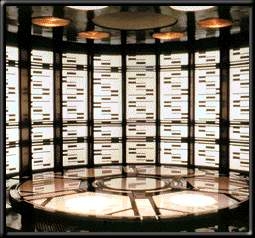
A transporter is a fictional teleportation machine used in the Star Trek science fiction franchise. Transporters allow for teleportation by converting a person or object into an energy pattern, then sending ("beaming") it to a target location or else returning it to the transporter, where it is reconverted into matter ("rematerialization"). Since its introduction in Star Trek: The Original Series in 1966, the name and similar concepts have made their way to other science fiction scenarios, in literature, games (SimEarth), etc.
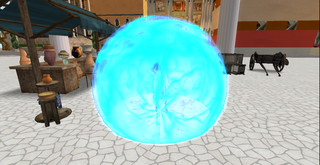
In speculative fiction, a force field, sometimes known as an energy shield, force shield, energy bubble, or deflector shield, is a barrier produced by something like energy, negative energy, dark energy, electromagnetic fields, gravitational fields, electric fields, quantum fields, plasma, particles, radiation, solid light, or pure force. It protects a person, area, or object from attacks or intrusions, or even deflects energy attacks back at the attacker. This fictional technology is created as a field of energy without matter that acts as a wall, so that objects affected by the particular force relating to the field are unable to pass through the field and reach the other side, instead being deflected or destroyed. Actual research in the 21st century has looked into the potential to deflect radiation or cosmic rays, as well as more extensive shielding.

Michio Kaku is an American theoretical physicist, activist, futurologist, and popular-science writer. He is a professor of theoretical physics in the City College of New York and CUNY Graduate Center. Kaku is the author of several books about physics and related topics and has made frequent appearances on radio, television, and film. He is also a regular contributor to his own blog, as well as other popular media outlets. For his efforts to bridge science and science fiction, he is a 2021 Sir Arthur Clarke Lifetime Achievement Awardee.
The plasma window is a technology that fills a volume of space with plasma confined by a magnetic field. With current technology, this volume is quite small and the plasma is generated as a flat plane inside a cylindrical space.
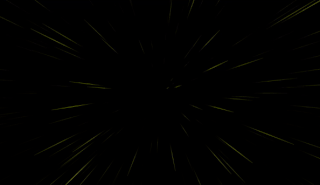
In science fiction, hyperspace is a concept relating to higher dimensions as well as parallel universes and a faster-than-light (FTL) method of interstellar travel. Its use in science fiction originated in the magazine Amazing Stories Quarterly in 1931 and within several decades it became one of the most popular tropes of science fiction, popularized by its use in the works of authors such as Isaac Asimov and E. C. Tubb, and media franchises such as Star Wars.

Physics World is the membership magazine of the Institute of Physics, one of the largest physical societies in the world. It is an international monthly magazine covering all areas of physics, pure and applied, and is aimed at physicists in research, industry, physics outreach, and education worldwide.
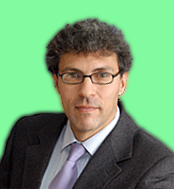
Miguel Alcubierre Moya is a Mexican theoretical physicist. Alcubierre is known for the proposed Alcubierre drive, a speculative warp drive by which a spacecraft could achieve faster-than-light travel.
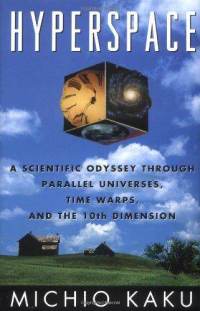
Hyperspace: A Scientific Odyssey Through Parallel Universes, Time Warps, and the 10th Dimension is a book by Michio Kaku, a theoretical physicist from the City College of New York. It focuses on Kaku's studies of higher dimensions referred to as hyperspace. The recurring theme of the book is that all four forces of the universe become more coherent and their description simpler in higher dimensions.

The Physics of Star Trek is a 1995 non-fiction book by the theoretical physicist Lawrence M. Krauss. It is the third book by Krauss, who later wrote a follow-up titled Beyond Star Trek in 1997.

Parallel Worlds: A Journey Through Creation, Higher Dimensions, and the Future of the Cosmos is a popular science book by Michio Kaku first published in 2004.

Visions of the Future is a 2007 documentary television series aired on the BBC Four television channel. The series stars theoretical physicist and futurist Michio Kaku as he documents cutting edge science.
Teleportation is the hypothetical transfer of matter or energy from one point to another without traversing the physical space between them. It is a common subject in science fiction literature and in other popular culture. Teleportation is often paired with time travel, being that the travelling between the two points takes an unknown period of time, sometimes being immediate. An apport is a similar phenomenon featured in parapsychology and spiritualism.

Physics of the Future: How Science Will Shape Human Destiny and Our Daily Lives by the Year 2100 is a 2011 book by theoretical physicist Michio Kaku, author of Hyperspace and Physics of the Impossible. In it Kaku speculates about possible future technological development over the next 100 years. He interviews notable scientists about their fields of research and lays out his vision of coming developments in medicine, computing, artificial intelligence, nanotechnology, and energy production. The book was on the New York Times Bestseller List for five weeks.
Teleportation is the theoretical transfer of matter and/or energy from one point to another without traversing the physical space between them. It is a common subject in science fiction and fantasy literature, film, video games, and television. In some situations, teleporting is presented as time traveling across space.
Memoirs of the Twentieth Century is an early work of speculative fiction by Irish writer Samuel Madden. This 1733 epistolary novel takes the form of a series of diplomatic letters written in 1997 and 1998. The work is a satire perhaps modeled after Jonathan Swift's Gulliver's Travels published seven years before. Madden was an Anglican clergyman, and the book is focused on the dangers of Catholicism and Jesuits, depicting a future where they dominate.

Atom: An Odyssey from the Big Bang to Life on Earth...and Beyond is the sixth non-fiction book by the American theoretical physicist Lawrence M. Krauss. The text was published on April 1, 2001 by Little, Brown. Krauss won the Science Writing Award (2002) for this book.

A planetary civilization or global civilization is a civilization of Type I on the Kardashev scale. This type of civilization is likely to be reliant on renewable energy sources such as stellar power, as well as powerful non-renewable sources such as nuclear fusion. A Type I civilization's energy consumption level is roughly equivalent to the solar insolation on Earth (between 1016 and 1017 watts) – around 3 orders of magnitude higher than that of contemporary humanity (around 2×1013 as of 2020).
Ady Hershcovitch is a plasma physicist best known for his 1995 invention, the plasma window, which was later patented.. In the plasma window, a plasma separates air from a vacuum by preventing the air from rushing into the vacuum. This scientific development can facilitate non-vacuum ion material modification, manufacturing of superalloys, and high-quality non-vacuum electron-beam welding. The device has been compared to the force field in the Star Trek TV series. He is well known for his work in plasma physics at Brookhaven National Laboratory. He has over 80 publications and 15 patents.

The Future of Humanity: Terraforming Mars, Interstellar Travel, Immortality, and Our Destiny Beyond Earth is a popular science book by the futurist and physicist Michio Kaku. The book was initially published on February 20, 2018 by Doubleday. The book was on The New York Times Best Seller list for four weeks.














